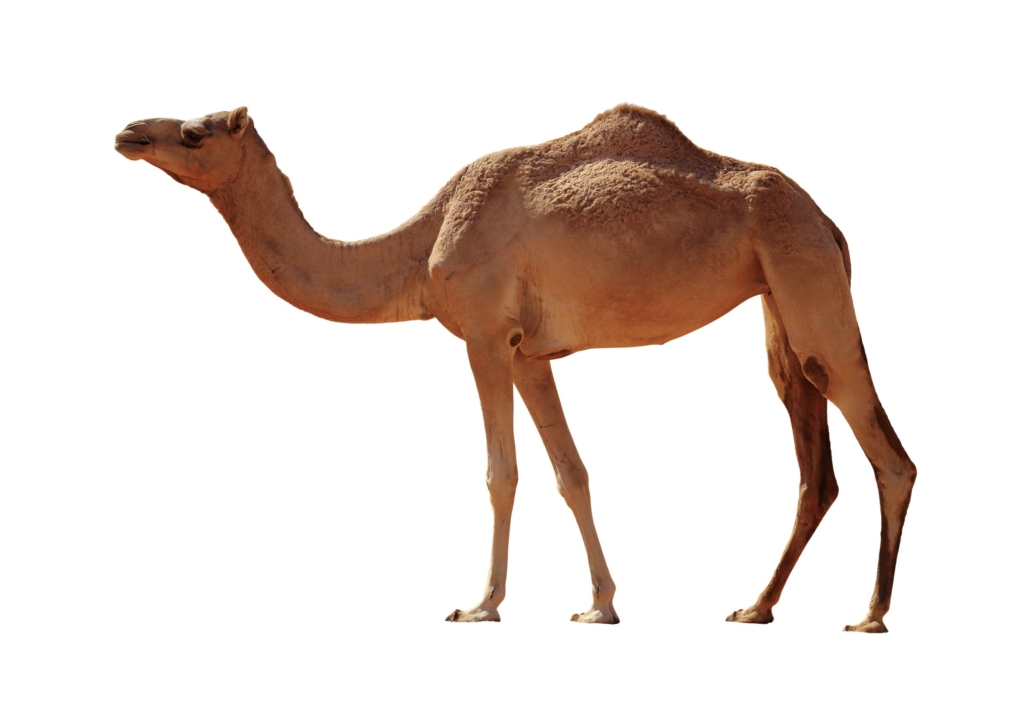Did you know that dehydrated camels can drink vast amounts of water, in a very short time, without experiencing hemolysis, which sometimes occurs when dehydrated cattle drink large amounts of water at one time? This phenomenon has largely been attributed to the remarkable resistance of camel erythrocytes to lysis in hypo-osmolar solutions. When osmotic fragility is studied in vitro, donkey and cattle erythrocytes begin to hemolyze at about 170-190 mOsm, but camel erythrocytes do not begin to hemolyze until 75-100 mOsm.
Camels, and new world camelids (llamas, alpacas, guanacos, vicunas), have small, rigid, elliptically shaped erythrocytes that are resistant to swelling in hypotonic solutions. This resistance to swelling and lysis has been attributed to two different characteristics of camelid erythrocytes. First, there is a greater concentration of integral membrane proteins (predominantly band 3) that are more closely packed in camelid erythrocytes than in human erythrocytes, and these protein-protein interactions might constitute an “integral membrane skeleton” in addition to the spectrin cytoskeleton on cytoplasmic side of the plasma membrane. The cytoskeleton is more tightly attached to the integral membrane proteins in camelid erythrocytes compared to human erythrocytes, which may be related to the increased numbers of integral membrane protein binding sites for the cytoskeleton and/or differenced in binding affinity between integral membrane proteins and cytoskeletal proteins. A second characteristic of camelid erythrocytes that resists osmotic swelling is related to of the higher hemoglobin concentration (MCHC 40%-45%) that occurs in camelid erythrocytes compared to erythrocytes of other mammals (MCHC 30% to 38%). Normal camelid erythrocytes are dehydrated (1.1-1.3 g water/g dry mass) relative to other mammalian erythrocytes (1.7-2.4 g water/g dry mass), and about 60% of their total cellular water osmotically inactive, compared to about 26% to 33% measured in humans, cattle, and pigs. Camelid hemoglobins have more charged amino acid residues and greater hydrophilicity than other mammalian hemoglobins studied, resulting in increased hemoglobin packing and greater resistance to osmotic hyperhydration or dehydration.
The importance of these unique erythrocyte characteristics in the ability of camels to consume large amounts of water at one time without inducing hemolysis has been questioned because only modest decreases in plasma osmolality were measured following rapid consumption of large volumes of water in dehydrated cattle and camels. However, when water was introduced into canine intestines by intubation, the plasma osmolality was lower in the portal vein plasma and lower yet in the mesenteric vein plasma than in the portal vein plasma. Consequently, the osmolality in smaller vessels directly absorbing water would presumably be even lower and explain the osmotically produced hemolysis documented to occur following excessive water consumption in cattle and goats.
Learn more here.


